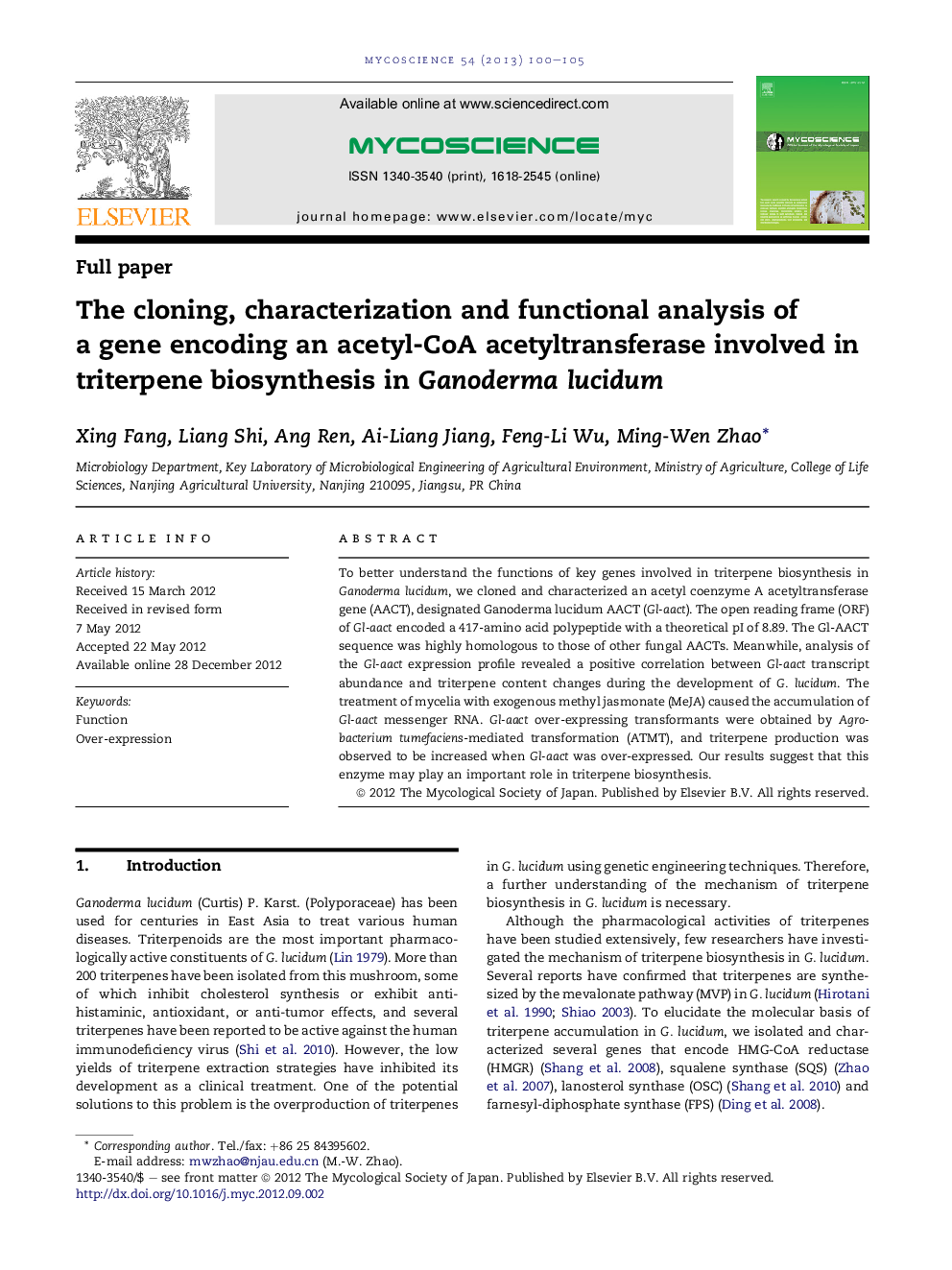| Article ID | Journal | Published Year | Pages | File Type |
|---|---|---|---|---|
| 2060231 | Mycoscience | 2013 | 6 Pages |
To better understand the functions of key genes involved in triterpene biosynthesis in Ganoderma lucidum, we cloned and characterized an acetyl coenzyme A acetyltransferase gene (AACT), designated Ganoderma lucidum AACT (Gl-aact). The open reading frame (ORF) of Gl-aact encoded a 417-amino acid polypeptide with a theoretical pI of 8.89. The Gl-AACT sequence was highly homologous to those of other fungal AACTs. Meanwhile, analysis of the Gl-aact expression profile revealed a positive correlation between Gl-aact transcript abundance and triterpene content changes during the development of G. lucidum. The treatment of mycelia with exogenous methyl jasmonate (MeJA) caused the accumulation of Gl-aact messenger RNA. Gl-aact over-expressing transformants were obtained by Agrobacterium tumefaciens-mediated transformation (ATMT), and triterpene production was observed to be increased when Gl-aact was over-expressed. Our results suggest that this enzyme may play an important role in triterpene biosynthesis.
▶ We cloned and characterized an acetyl-CoA acetyltransferase gene from Ganoderma lucidum. ▶ The Gl-aact transcript profiles during development were analyzed. ▶ Treatment with exogenous methyl jasmonate caused accumulation of Gl-aact mRNA. ▶ Triterpenes production was increased, when Gl-aact was over-expressed. ▶ It suggested that Gl-aact may play an important role in triterpenes biosynthesis.
